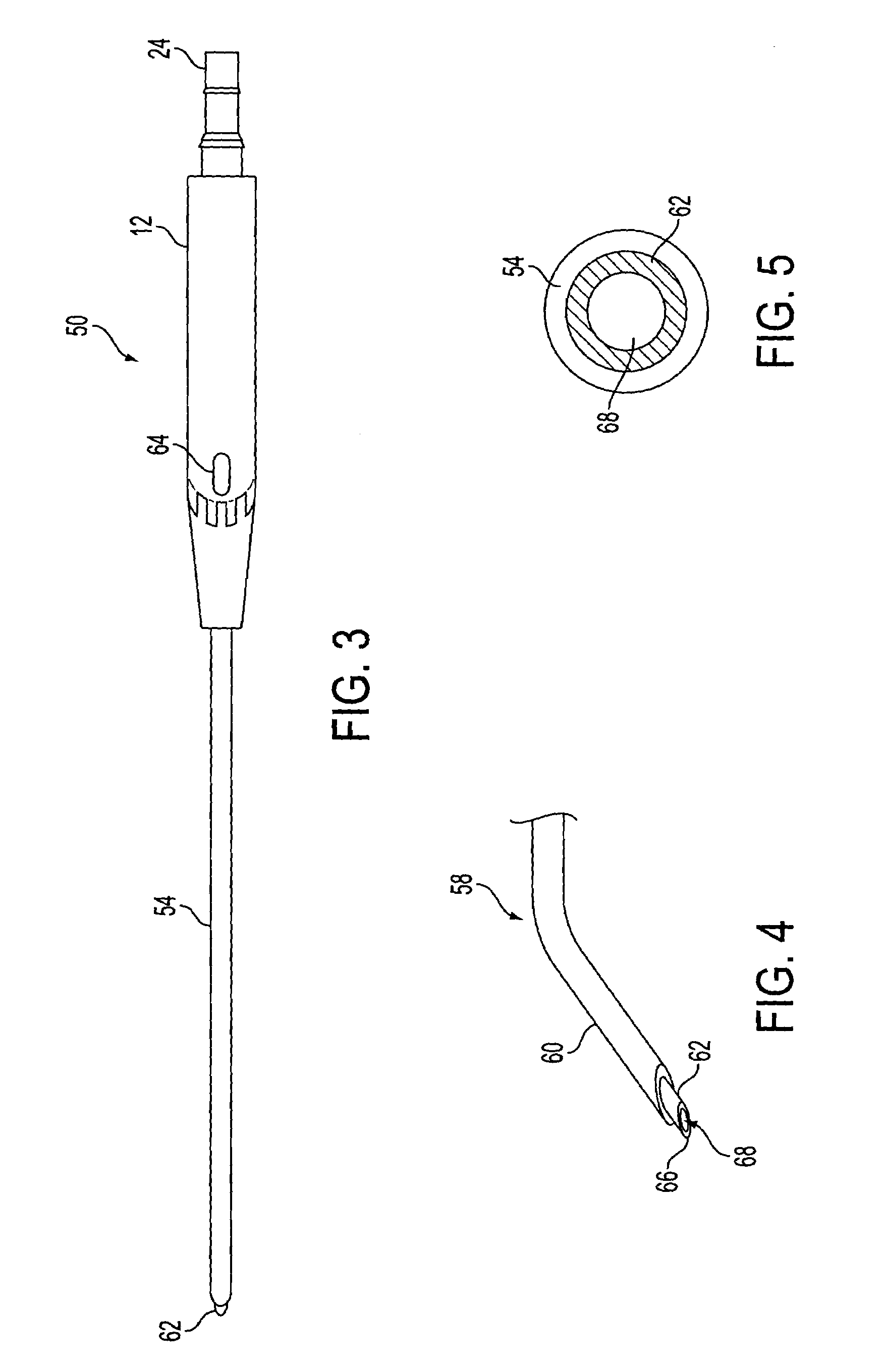Beveled tonsil suction cautery dissector
a tonsil and cautery technology, applied in the field of surgical devices, can solve the problems of chronic infection, unresponsive to medical therapy, and inability to physically remove the tonsil reservoir of infection, and achieve the effect of minimal thermal trauma and rapid tissue cutting
- Summary
- Abstract
- Description
- Claims
- Application Information
AI Technical Summary
Benefits of technology
Problems solved by technology
Method used
Image
Examples
Embodiment Construction
[0050]As discussed above, various embodiments and iterations of the present invention relate to an improved suction cautery dissector as depicted, for example, in FIGS. 2, 3–5, 7, 9, 10, 12, 14, and 16. FIG. 2 depicts a suction cautery dissector 50 that provides a handle assembly 12 and an optional handle gripping mechanism 14. As depicted in FIG. 2, a groove or ridge may be provided for handle gripping mechanism 14. Also, any other similar structure may be used to enable the surgeon or other user to get a better grip on the handle of the device. This structure is optional or may be enhanced with additional such structures around the periphery of handle assembly 12. In addition, the shape and size of the handle assembly 12 may be modified to provide better gripping for the surgeon using the tool as will be appreciated by those of ordinary skill in the art.
[0051]Connected into handle assembly 12 may be provided an insulated metal tubing assembly 52. According to one embodiment, a met...
PUM
 Login to View More
Login to View More Abstract
Description
Claims
Application Information
 Login to View More
Login to View More - R&D
- Intellectual Property
- Life Sciences
- Materials
- Tech Scout
- Unparalleled Data Quality
- Higher Quality Content
- 60% Fewer Hallucinations
Browse by: Latest US Patents, China's latest patents, Technical Efficacy Thesaurus, Application Domain, Technology Topic, Popular Technical Reports.
© 2025 PatSnap. All rights reserved.Legal|Privacy policy|Modern Slavery Act Transparency Statement|Sitemap|About US| Contact US: help@patsnap.com



